The Hibiscus Shelter Rock Art Curtain
***This blog post does not deal directly with the Alexandria Project, but is a throwback to a Shumla – Ancient Southwest Texas Project (ASWT) collaboration at Hibiscus Shelter back in 2012.***
By Charles Koenig
Hibiscus Shelter is located on the Ryes N’ Sons Ranch near the Devils River, and contains a fascinating pictograph panel that includes Pecos River, Red Linear, possible Bold Line Geometric, and some unclassified styles of rock art. In addition to the rock art, the site also hosts a medium-sized burned rock midden. Burned rock middens, or as we like to call them earth oven facilities, are places where indigenous peoples baked desert succulents like lechuguilla and sotol (see ASWT earth oven posts for more details about earth oven cooking).
ASWT Investigations at Hibiscus Shelter
From 2011-2012, ASWT conducted investigations of earth oven cooking on the Ryes N’ Sons Ranch via archaeological survey and excavations at four different earth oven facilities. Hibiscus Shelter was chosen as one of the sites to excavate for two reasons: 1) we wanted to see if there were differences between rockshelter earth oven facilities versus terrace and upland locations; and 2) Hibiscus Shelter was located at the head of a small canyon, which would allow us to get across from the shelter and document the site using ground-based SfM (see the SfM and GigaPan blog).
Prior to ASWT investigations at Hibiscus, we knew we had to develop a way to protect the rock art from any dust kicked up during excavations. In fact, the landowners told ASWT that Carolyn Boyd would need to approve of our plan before any excavations started!
Protecting the Rock Art
After brainstorming designs, and getting Shumla staff involved, we came up with the idea for the rock art curtain. The rock art curtain was a simple concept: suspend a barrier that would keep dust away from the rock art. However, the challenges include: 1) the curtain could not damage the rock art; 2) the barrier needed to keep dust away; 3) the barrier needed to allow air movement and not trap moisture; and 4), the entire curtain system needed to stay upright without constant monitoring.
The design we came up with used legs created by curtain rods bracing wood wrapped in pipe insulation against the roof of the shelter. We had to use sections of PVC pipe to wedge the curtain rods into the ground, and ensure they would extend far enough to retain tension. The barrier protecting the art was painter’s tarp that was stapled to the wood and then hung down from the roof to the floor. The bottom of the tarp was held in place by rocks.
The Legs
The “Curtain Rod”
The Painter’s Tarp
The Finished Rock Art Curtain
A Success in Pictograph Protection
The initial setup went up without a hitch…until the first gust of wind came through the site! With a little re-configuration of the rocks at the bottom of the tarp, the entire system was able to survive the next four weeks of excavations. We took the curtain down every day when we left the site so it did not have the opportunity to fall against the rock art while no one was there to stop it.
Occasionally we had to excavate around the curtain, but in all I would say the rock art curtain was a success, and it served its purpose in protecting the rock art. The implementation of a protective barrier to protect rock art during excavations was the first use in the Lower Pecos, and highlights how “dirt” and “rock art” archaeologists can work together to protect archaeological remains at a site.
Special thanks to Rick and Mary Rylander, Dr. Steve Black, and the entire 2012 Ancient Southwest Texas Project field crew for making this blog possible.
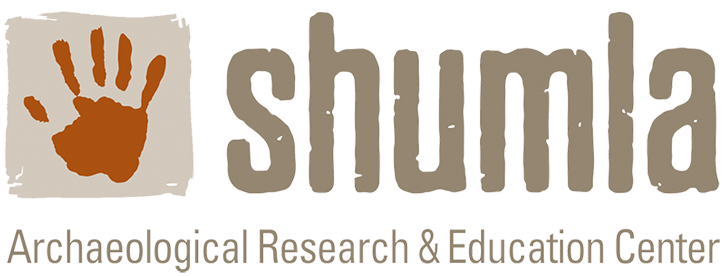
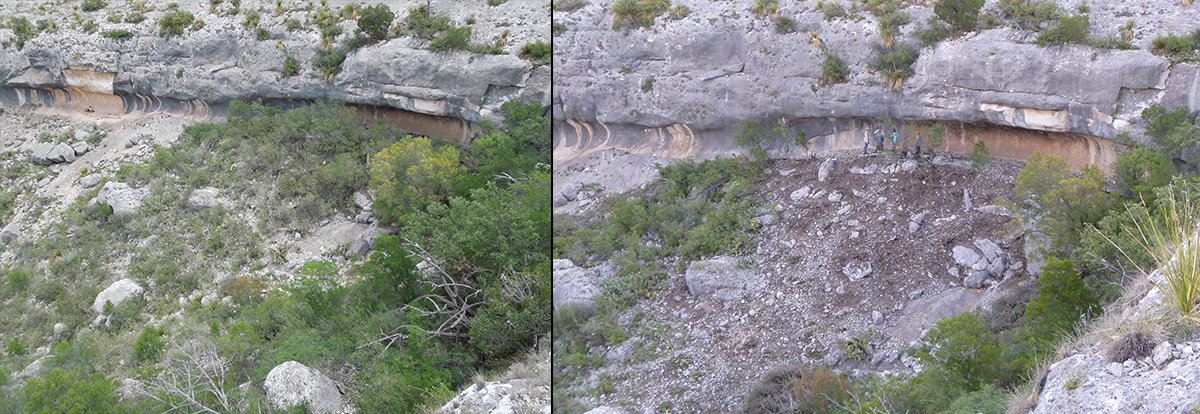
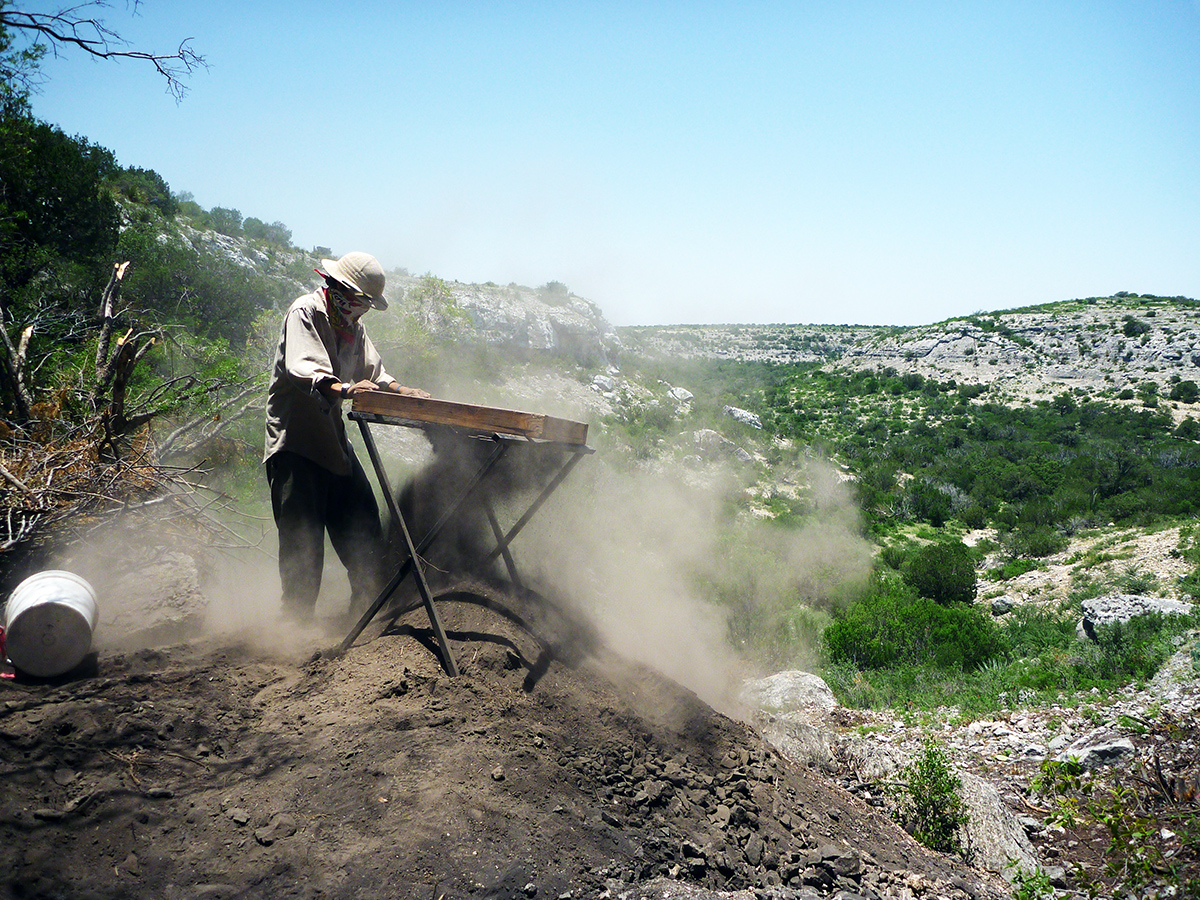
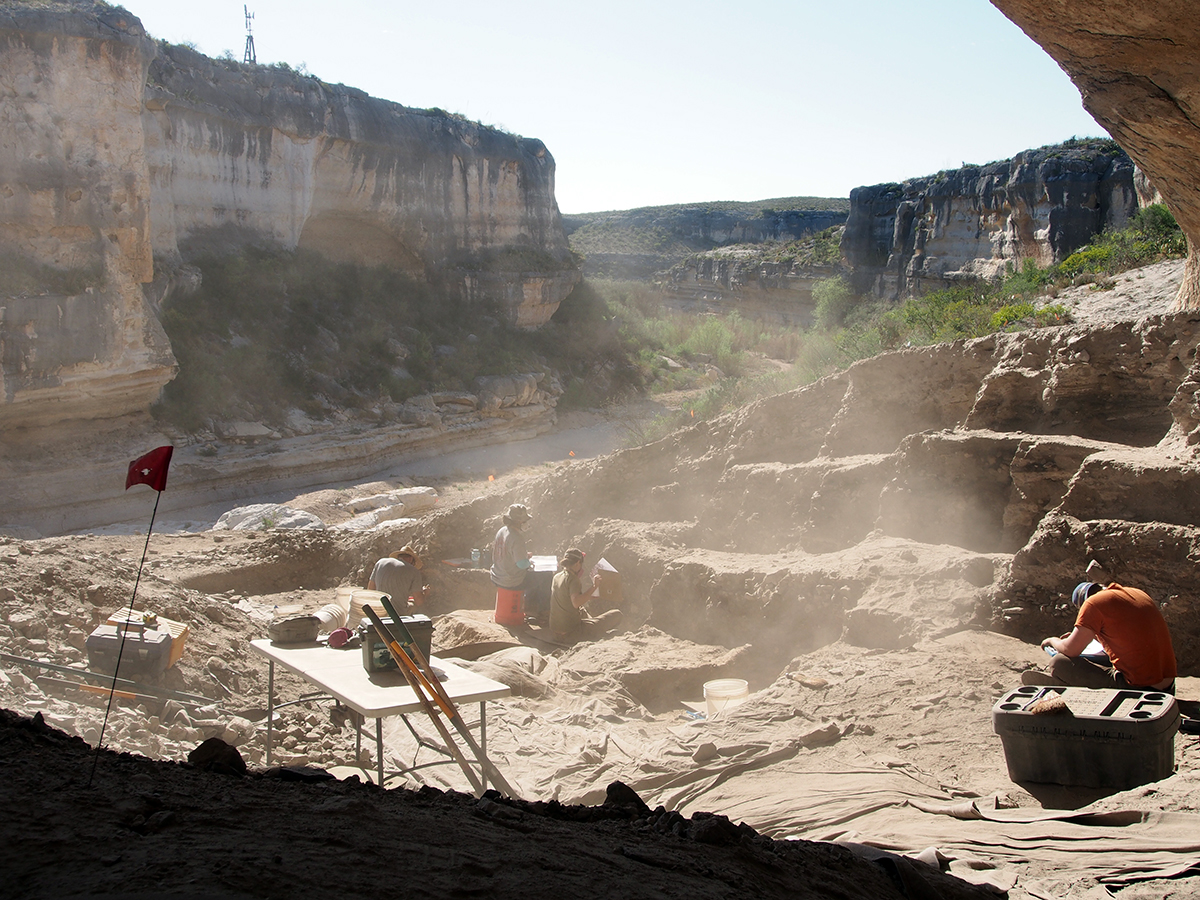

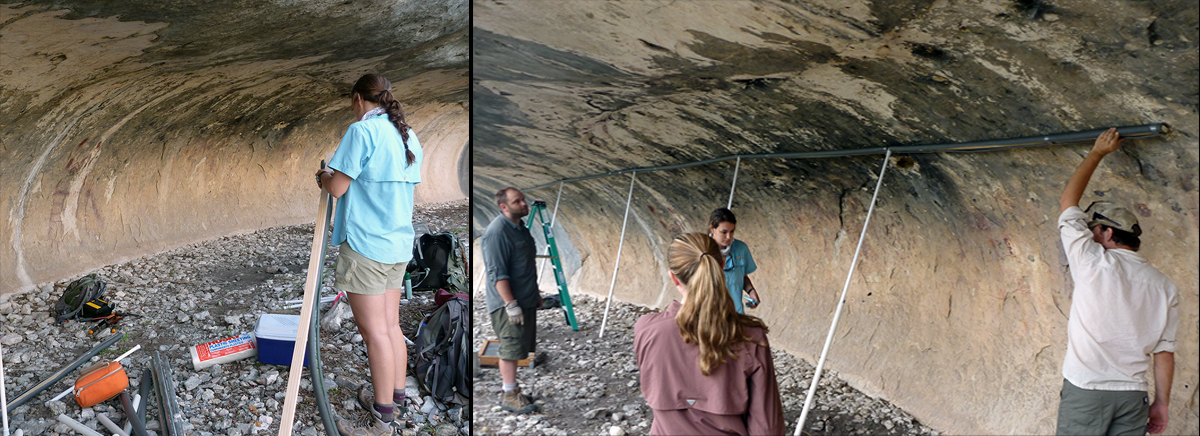
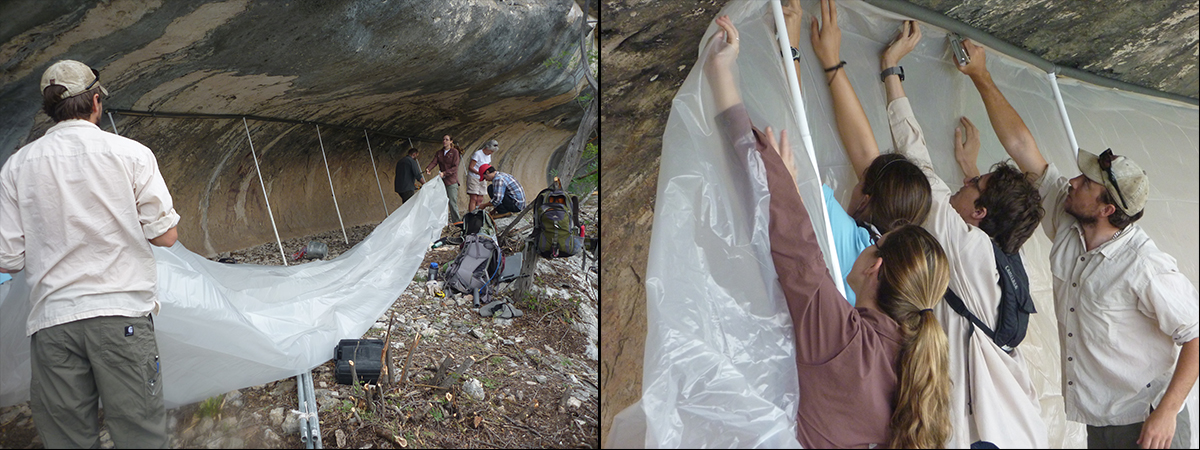
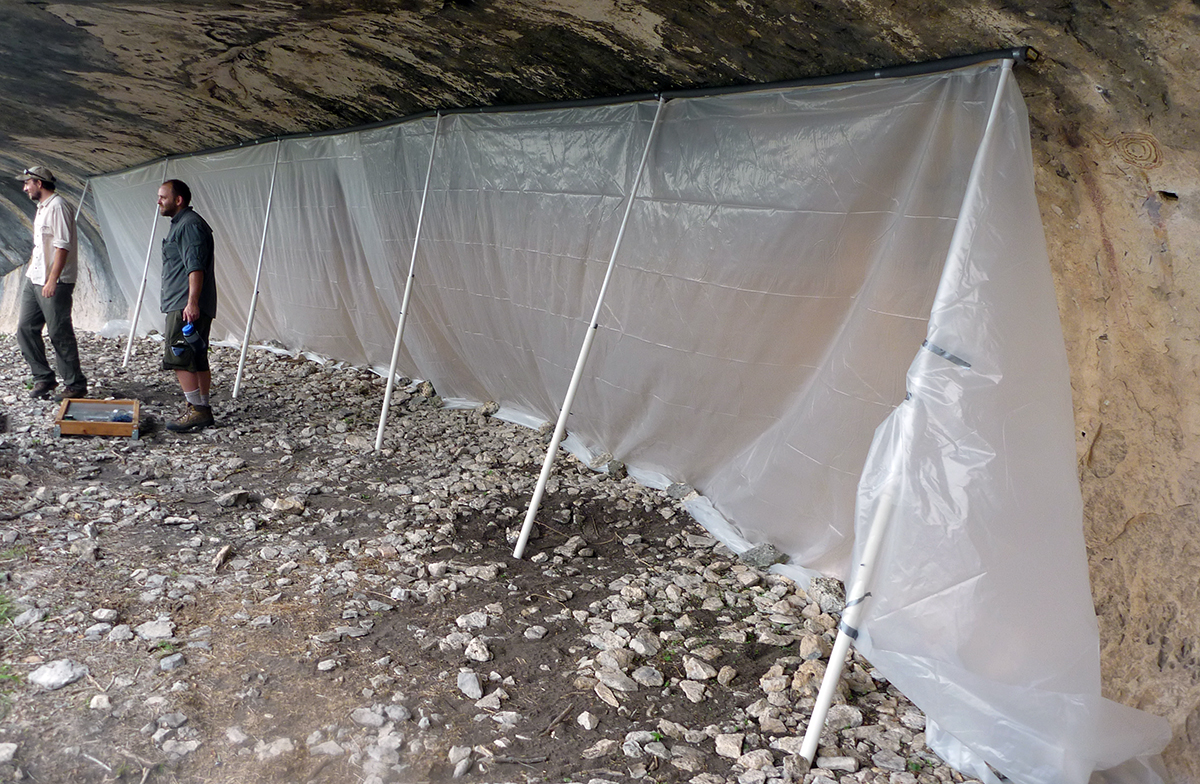
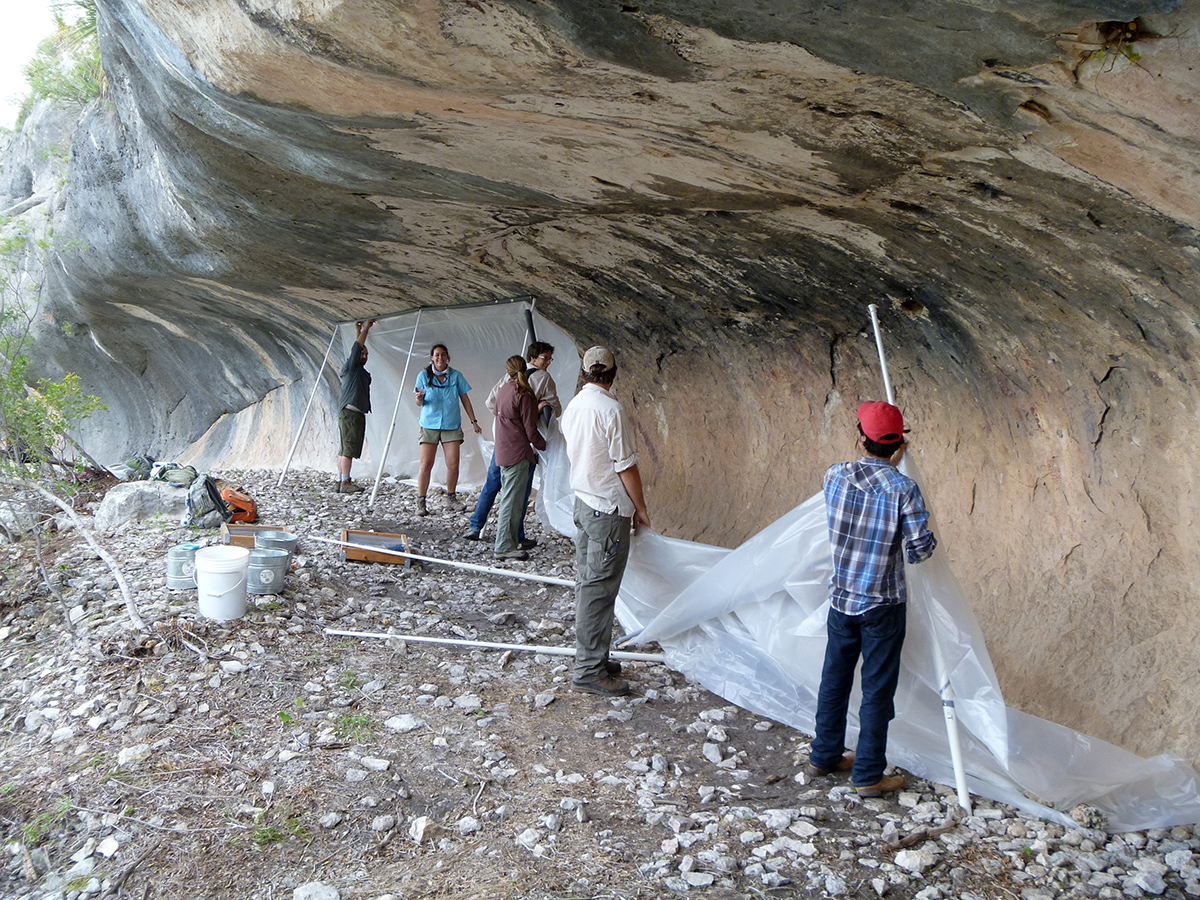
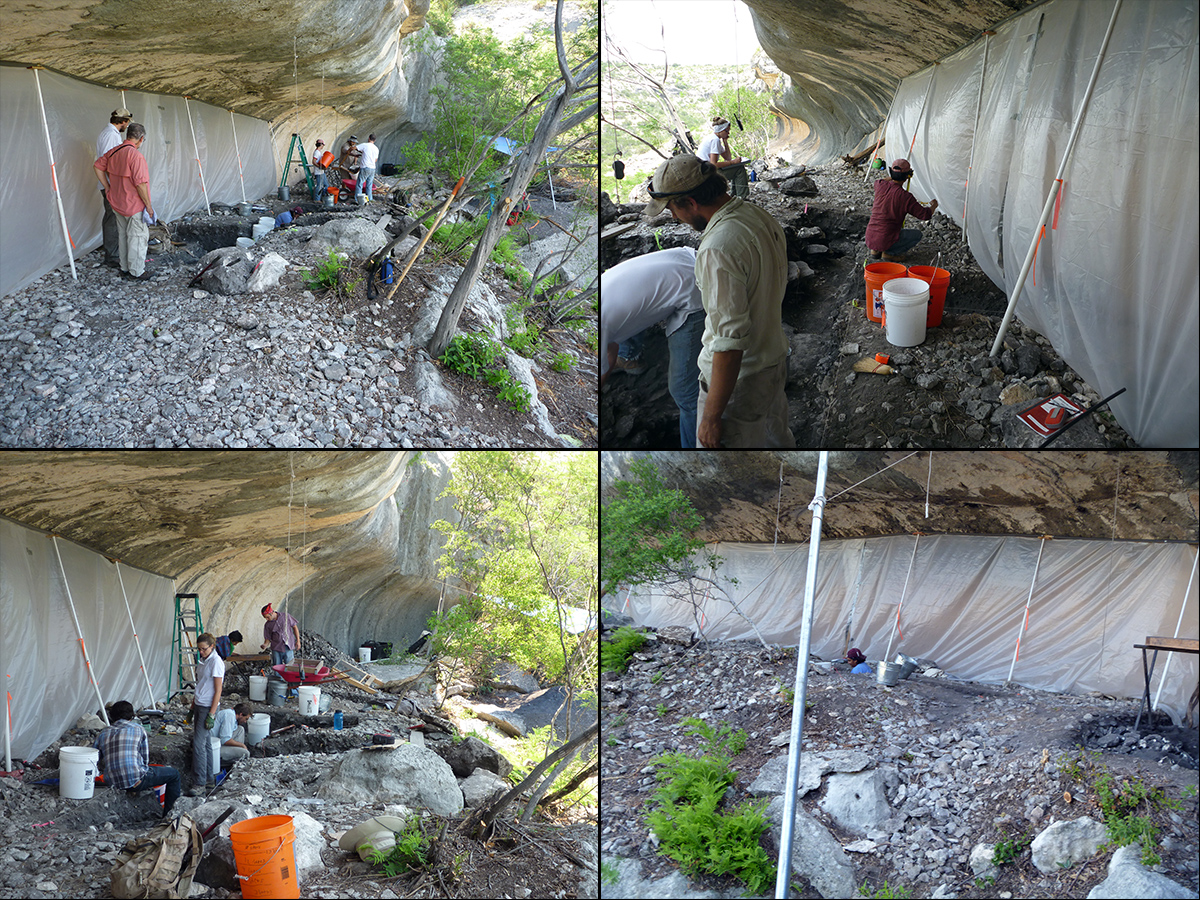
0 Comments